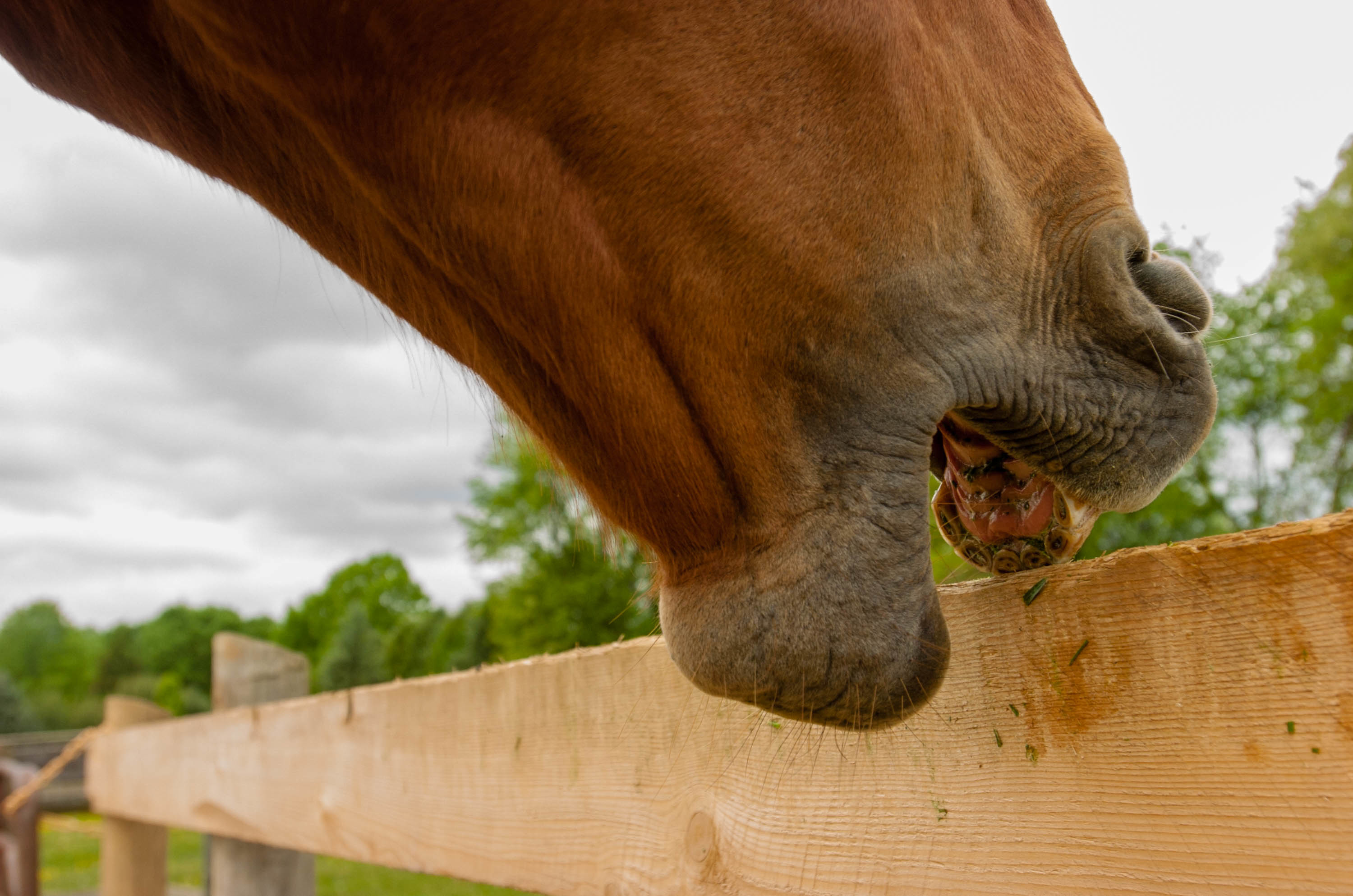Q: “My horse has been a longtime cribber and I can’t get him to stop. I feel that a cribbing collar would make him uncomfortable. Are there other ways to stop cribbing besides the use of a collar? Is it OK to let him crib?”

KATHERINE HOUPT, VMD, PhD, DACVB, weighs in on the subject:
You’re right, cribbing collars are usually uncomfortable for horses, particularly ones that use a headstall. To decide if you should use one on your horse, evaluate the risk associated with cribbing and weigh it against his comfort. Fifteen years ago I might have said, “Let him crib,” but now we know cribbing is a risk factor for colic, particularly epiploic foramen entrapment, a type of colic that requires surgery and has low recovery rates.
When a horse cribs, he sucks, or aspirates, air into his esophagus. If he does not eat anything for a few minutes after that, the air will diffuse out of his mouth. But if he eats, the food will push the air down his esophagus and into his stomach. Over the course of a day, he might repeat this many, many times, trapping quarts of air in his intestines. This can make the intestines move—and almost float—in the abdomen. As a result, sections of the intestines can get trapped, especially in the epiploic foramen, a narrow passage between two parts of the abdomen.
Most of the time, cribbing cannot be fully stopped, but changing your management practices can reduce its frequency. I have been able to fully stop cribbing only in horses who have just begun the habit. A change in diet can be beneficial, especially eliminating sweet feed. Its sugary taste releases opiates in the brain, which cause the horse to crib. Plain oats have a far lower sugar content and, as a result, are the grain least likely to stimulate cribbing, especially when given with plenty of hay. Plain oats and hay are a healthy diet for a horse who is not exercising routinely. If your horse requires more calories, supplement his hay with a low-sugar/low-starch grain or corn oil.
Housing your horse outside can also help to prevent cribbing if he has just begun the habit, or it can reduce cribbing frequency if he has an established habit. Overall, the more time spent outside eating grass or hay seems to decrease time spent cribbing.
Anti-cribbing collars or straps work by preventing the horse from flexing his neck. He can still latch onto a horizontal surface, but if he can’t flex his neck, he can’t suck air into his esophagus. Adjusted snugly around the horse’s neck and poll, just behind his jaw, these collars are either wide enough to stop the horse from flexing or use a jointed metal piece that closes on the throatlatch with a nutcracker-like action—or a sharp piece of leather that pokes him—when he tries to flex his neck. Although cribbing collars are generally very effective and don’t cause stress (which we know because horses’ blood cortisol levels do not rise when they are wearing cribbing collars), they must be tight to be effective and thus can cause abrasions on the skin beneath them. So if you use one, check that area frequently for signs of irritation.
A cribbing muzzle is another option. Cribbing muzzles appear similar to grazing muzzles, but most use metal bars across the bottom to allow the horse full access to eating and drinking while stopping him from biting onto a horizontal surface to crib. These muzzles don’t seem to cause any discomfort, but they appear to be more frustrating to horses wearing them than cribbing collars.
Awful-tasting sprays applied to where the horse cribs rarely help. When horses crib, they are not actually tasting the horizontal surface they’re biting, just resting their incisors on it. Therefore, application of some noxious substance is typically ineffective. However, it will reduce wood chewing.
The million-dollar question is: Why would a horse start cribbing in the first place? There is a hereditary component to it, but the gene that causes it has not been identified. A change of diet, especially from pasture to grain, seems to be the most common stimulus. So your best strategy for reducing your horse’s cribbing rate is to give him a lower-sugar grain (and/or less grain altogether, if possible), less stall time and more pasture time. If he has had gas colic already, he definitely should wear a cribbing collar.—Veronica Green-Gott
After graduating from the University of Pennsylvania School of Veterinary Medicine, Dr. Katherine Houpt went on to receive her doctorate in behavioral psychology from UPenn as well and to become board-certified in veterinary behavior. She currently works as an equine behaviorist at Cornell University in Ithaca, New York. She has a clinical interest in domestic animal welfare and in the physiological basis of equine ingestive and maternal behavior. Dr. Houpt is especially passionate about improving the welfare of horses being used for sport and recreation and has written many publications on the topic.
This article was originally published in the October 2018 issue of Practical Horseman.










